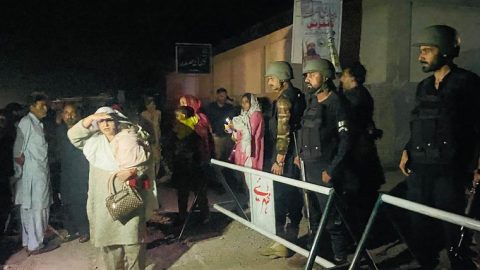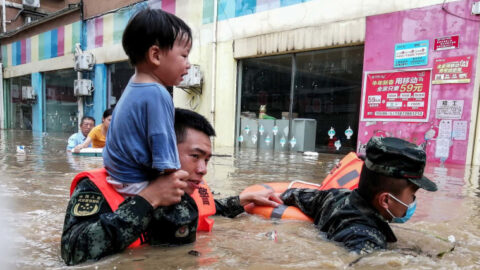As Israel’s military assaults southern Gaza above ground in pursuit of Hamas leaders, it is also considering a plan to disable the militant group’s vast labyrinth of underground tunnels by flooding them with seawater, two U.S. officials told NBC News.
The plan to pump water into the tunnels, the officials said, is among the options being explored by Israel to destroy the system, which has emerged as a central goal of the Gaza campaign. Israel’s military declined to comment on the flooding tactic, which was first reported by The Wall Street Journal.
But in the past, it has said the tunnels have been used to conceal hostages, weapons and fighters who can travel across the Gaza Strip without exposing themselves to airstrikes and ambush invading ground forces. Hamas leaders have boasted the tunnels are hundreds of miles long and full of traps.
They are also a hiding place for the group’s leaders.

Israeli Prime Minister Benjamin Netanyahu said Wednesday that his forces were encircling the Khan Younis home of Yahya Sinwar, who is seen as the mastermind of Hamas’ Oct. 7 terror attack that Israeli officials say killed some 1,200 people.
“He can escape, but it’s only a matter of time before we get him,” Netanyahu said.
An Israeli army spokesman, Rear Adm. Daniel Hagari, said later that Sinwar was “not aboveground; he is underground.”
Israel says its troops are blowing up the entrances to tunnels after discovering hundreds throughout Gaza, but it may also be considering how to render the entire network inoperable in the long term.
While the U.S. officials could not say whether Israel had assembled pumps to flood the tunnels or whether the tactic was feasible, pictures released by the IDF and satellite imagery verified by NBC News appear to show pipes being connected to the sea.
On one beach in the Wahsh area of Gaza City in the north of the Strip, a satellite image captured Nov. 30 by Planet Labs shows pipes running from the sea between mounds of sand. There were no pipes or mounds of sand in a similar image taken at the same location Oct. 8.
A photo released by the IDF on Dec. 3 also shows Israeli troops on the beach the day before, alongside long pipes.
Further up the beach, satellite imagery captured Dec. 2 shows what appears to be four pipes coming out of the sea and a curved spit creating a natural harbor. There were no pipes at the same location Oct. 8, and the spit, or beach landform, could not be seen.
Flooding the tunnels is possible, according to Michael Clarke of the Royal United Services Institute, a British think tank.
“That area of Gaza is all soft sandstone, so in one respect it’s easier to dig tunnels but it also makes them prone to flooding,” he told the British broadcaster Sky News. (Sky News is owned by Comcast, the parent company of NBC News.)
“The Egyptians did this in 2015 in the south,” he added, referring to the flooding of several Gaza tunnel networks in 2013 and 2015, which made them unusable for use by smuggling operations. “They could certainly do it, the question is whether there are hostages in the tunnels.”

Meanwhile, inside Gaza, residents of Khan Younis said Wednesday that the Israeli army had showered the area with leaflets quoting a Quranic verse: “The flood overtook them as they were wrongdoers.”
Some linked it to Hamas’ name for its Oct. 7 attack against Israel, Al Aqsa Flood Battle, according to The Associated Press. But others pointed to the reports that the Israeli military was considering flooding the tunnel network.
Others have raised concerns that the seawater could destroy Gaza’s land, exacerbating a humanitarian crisis in the Palestinian enclave where food and water are in short supply and health officials say more than 17,000 people have been killed by weeks of Israeli attacks.
The Palestinian Water Authority warned it would have “devastating effects” on an underground aquifer contaminating it with high rates of salinity, according to a report from WAFA, the Palestinian news agency.
This will lead to the destruction of the underground reservoir, thus destroying any future hope for its rehabilitation “and threaten to make the Strip unviable,” WAFA quoted the authority as saying in a statement.








Recent Comments